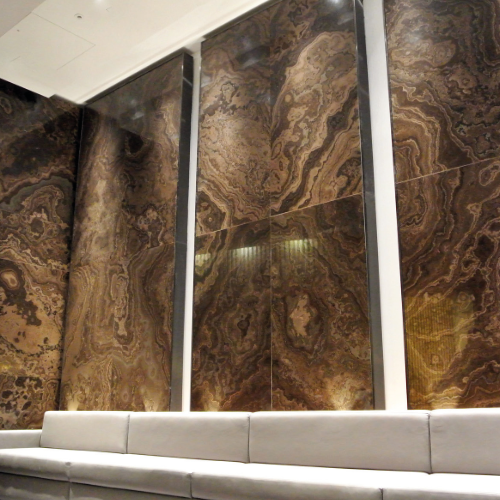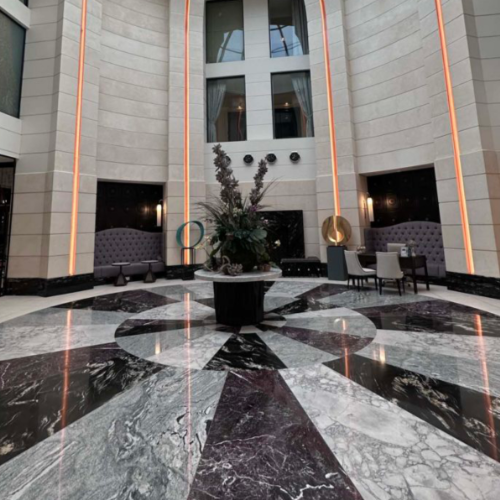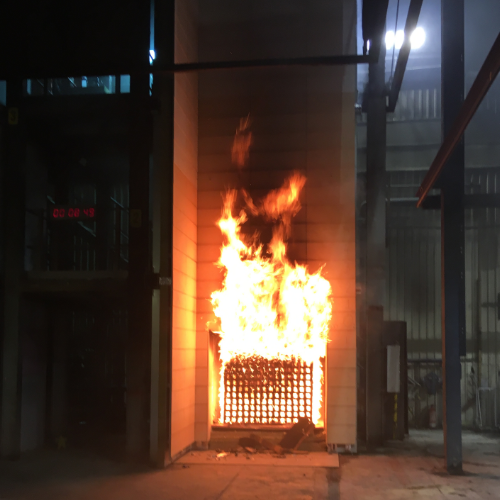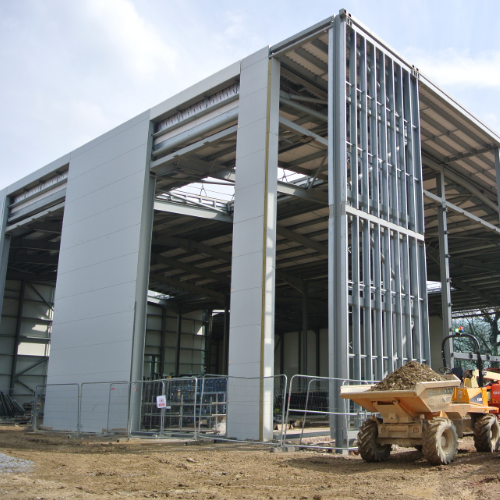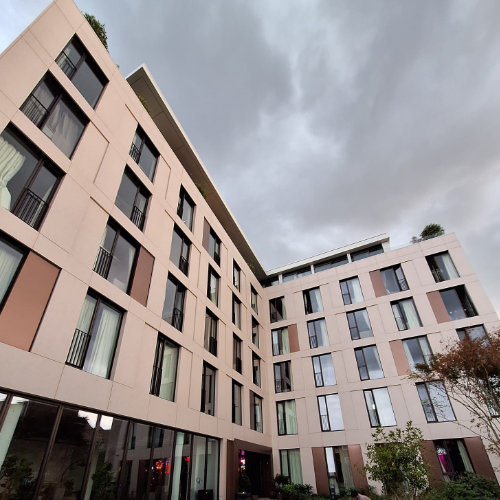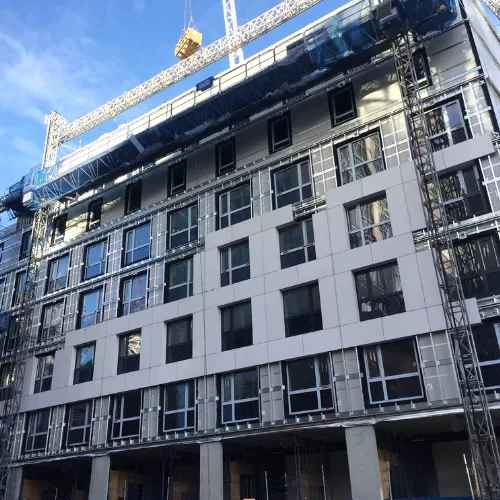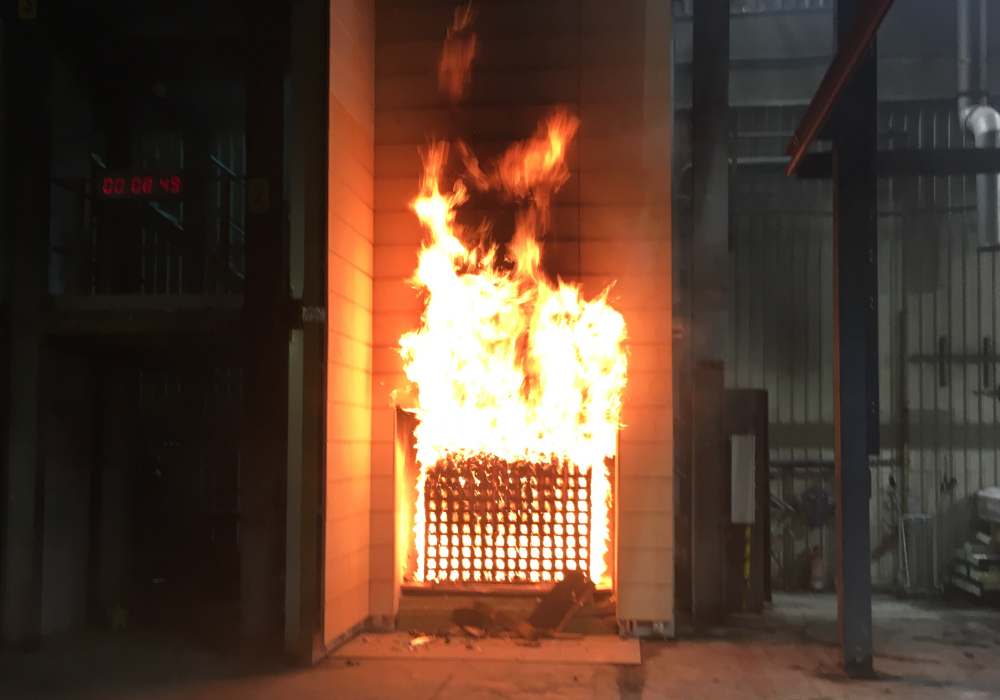
In modern construction, fire performance is a critical consideration, especially for external wall systems. When it comes to stone cladding, achieving compliance with building regulations while maintaining aesthetic and design flexibility is key. One of the most common queries we receive is about the requirements for A2-rated stone cladding, and how to meet them without compromising on design.
What does A2 fire-rating mean?
An A2-s1, d0 fire rating, as defined by EN 13501-1, classifies a material as non-combustible or of limited combustibility. A2 materials will not contribute significantly to a fire and produce very limited smoke (s1) and no flaming droplets (d0).
For buildings above 18 metres in the UK—or 11 metres in Scotland—all external wall materials, including cladding, insulation, and fixings, must achieve a minimum of A2-s1, d0. This requirement is especially crucial for residential and mixed-use buildings.
To better understand what achieving an A2 rating involves, it’s helpful to look at the underlying fire tests and criteria that make up the EN 13501-1 classification. There are two key components:
- EN ISO 1716 Bomb Calorimeter Test: Each component of a composite panel is tested individually to determine how much energy it would release during complete combustion.
- EN 13823 Single Burning Item (SBI) Test: This test simulates a real-life fire scenario—such as a waste bin catching fire in the corner of a room (approximately 500mm x 1000mm). The exposed face of the material is subjected to flames, and performance is evaluated based on flame spread, smoke production, and flaming droplets.
Together, these tests provide a comprehensive picture of how a material or system behaves in fire conditions. This ensures that only systems with very limited contribution to fire achieve the A2 classification.
How to achieve A2 compliance with stone cladding?
Natural stone itself is inherently non-combustible and generally meets A1 or A2 standards. However, achieving full system compliance depends on the entire cladding system, not just the stone.
1. Stone Panel Composition
If using lightweight or composite stone panels, the internal core or backing material must also be A2-rated. At Cristofoli, we use a stone panel composition consisting of a thin layer of natural stone bonded and mechanically fixed to an A2-rated inorganic composite board. These backing panels are engineered to meet A2-s1, d0 classification under EN 13501-1 while maintaining structural integrity and lightweight performance.
2. Adhesives and Fixings
All adhesives, bonding agents, and mechanical fixings used in the cladding system must also meet A2 standards. This includes any tapes or structural bonding used to laminate stone to its backing. Our specialised epoxy system has been tested to comply with relevant fire performance requirements.
3. Substructure and Support Frame
The subframe, typically constructed from aluminium or stainless steel, must be non-combustible. Likewise, any insulation, fire barriers, or cavity closers behind the cladding must also meet A2 or better classification to ensure full system compliance.
4. System Testing and Certification
Manufacturers should provide system-level fire certification, not just individual material data sheets. Third-party fire testing, such as BS 8414 or classification reports from accredited laboratories, is often required to satisfy building control or warranty providers.
A2-rated lightweight stone cladding
Our CristoLite lightweight stone panels provide an ideal solution for architects and contractors looking for compliant, high-performance cladding with the natural beauty of stone. These panels are not only compliant with fire regulations, but also reduce weight and simplify installation
We also offer A2-rated Porcelain cladding panels. Porcelain is a ceramic-based material fired at extremely high temperatures, making it naturally non-combustible and dimensionally stable. Porcelain cladding is an excellent choice for architects seeking a refined, contemporary aesthetic with full A2 compliance and minimal maintenance.
Conclusion
Achieving A2 fire rating compliance for stone or porcelain cladding involves far more than selecting non-combustible finishes. A fully compliant façade system must ensure that every component—core, adhesives, fixings, substructure, and insulation—meets A2 fire performance standards and is supported by robust testing and certification.
If you’re planning a façade project that must meet A2 fire regulations, get in touch with our technical team. We’ll help you navigate specification requirements, select the right materials, and ensure full compliance—without compromising on appearance or performance.



